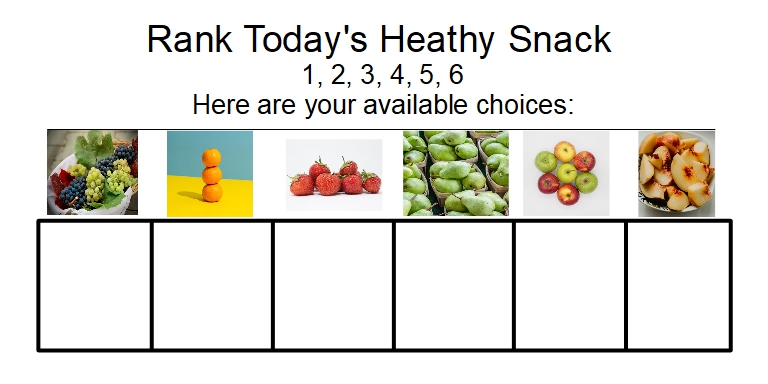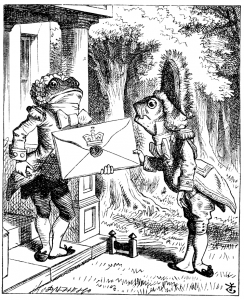In which my student and I discuss how not teaching civics has failed her, while learning about ranked choice voting, filibusters, and parliamentarians. Part of the Whackadoodle World Series, by Lynn Marie Sager
“This filibuster argument makes no sense to me,” she complained over her shoulder. “I don’t know why we just don’t get rid of it.”
“It has got everybody confused. I think one of the biggest reasons, the root cause if you will, is that we don’t teach civics anymore. And even when we do teach civic, we tend to teach it all wrong,” I declared, tossing a rock at the bay as hard as I could. It landed a lousy six feet away.
My student, seated beside me on the old sea wall, laughed at my weak throw. Her parents had dropped her off for our weekly tutoring session on their way to their weekly yacht race. The rock she tossed into the bay after mine went twice as far.
“Civics. Ugggh,” she winced at the word. “I remember how that went. ‘This is how a bill gets made,’ and ‘this is how the government runs.’ boring.” she drew the word boring out.
“That’s because you have never attempted to get a law passed. I believe that nobody should ever be allowed to pass civics unless they have actually attempted to get a law passed.”
“That seems harsh.”
“They wouldn’t have to succeed, just make the attempt. And you have to admit that it would be much more educational than reading from a book,” I shook my head. “I mean, how can we expect people to trust their government when so many of them don’t even understand how it works? Why trust your representative, if you have never met your representative? We expect to have an informed citizenry, but we don’t teach kids the rules of the game.”
“Game?” she prompted.
“Yes, game. Games have rules. Governments have rules. The key to teaching civics is to explain the rules of government and then get the kids excited about playing the game.”
“Yeah, that’ll happen,” she mocked.
“And we need to start teaching civics earlier, as well as every year,” I went on ignoring her. “Start in kindergarten, maybe even pre-k.”
“You wanna teach kids about government in pre-k,” she repeated in disbelief. “Isn’t that before they even know how to read?”
“Yeah, but I wouldn’t go shoving a civics book in their face. I’d start with the basics. I would teach them how voting works, and perhaps a little about representational government. I’d at least get them to understand the importance of picking representatives.”
“Picking representatives?” she repeated doubtfully. “In pre-k?”
“Yeah,” I said with emphasis. “I would work with the school districts to set up a real student government. A government that actually has power over the local school board. I’d model the student government structure on the local governments, and each class would have their own representative in that government, even the pre-k kids.” My hands moved excitedly as I tried to draw what I saw in my mind in the air. “The individual schools would have a government that reflects their local city government with a Mayor and school council. The school districts would be modeled after the local state government with a governor and however their state organizes their state government, and then the state school system would be modeled after the federal government with a president and a congress.”
“Wait wait wait,” she interrupted. “Don’t all the state governments run the same way?”
“Not at all.” I grimaced. “Each state has its own constitution, and its own laws for organizing; for example, most states legislatures are bicameral, meaning it consists of an both an upper chamber and a lower chamber. In other words, a House and a Senate. However, Nebraska has a unicameral legislature, meaning it has only one chamber, and they are all called Senators. In some states, the legislature meets every year, in other states, legislature meets every other year. In some states, the legislators are considered full time. In other states, they are considered part time. It all depends on the individual state’s constitution and laws.”
“Wow, I thought all the states were all the same,” she paused, musing to herself.
“You are forgetting one of our first civic lessons” I chided her.
“Which one was that?”
“What form of government do we live under?” I asked her pointedly.
“Oh right,” she tapped her head mockingly. “We live in a Republic, not a democracy. That one still gets me. I don’t know why people keep calling it a democracy if it isn’t.”
“It is because we have certain constitutional amendments that guarantee every citizen over the age of eighteen the right to vote, and we have certain federal laws designed to protect those rights. However, in some states, citizens who have been convicted of crimes are denied their right to vote. How is that possible?”
“Because each state has its own set of voting laws,” she replied by rote.
“Bingo.”
“So why did they set it up that way?” she asked after a moment.
“Why?” I laughed. To me, it seem so obvious. “Because our founders didn’t want a democracy. They wanted a republic. They didn’t want the other colonies telling them how to live their lives.”
“Hum,” and she was silent again, her head nodding up and down as she organized her thoughts.
“So,” she mumbled eventually, “if I understand correctly, you wanna set up each school with a kind of city council, each district with a kind of a state legislature, and each state with a kind of a federal legislature.” She suddenly laughed, and added, “And what would a national gathering be molded after? The United Nations?”
“Laugh all you like,” I answered lightly. “But that’s actually not a bad idea.”
“Hum, I think I get it,” she concluded after a moment. “You want to teach students the importance of representatives buy actually giving them representatives.”
“Exactly,” I nodded with satisfaction. “Teach them the rules of the game and then coach them while they play.”
“And what? Like to teach them about voting, you’d get them to vote on what books you would assign for reading?”
“Possibly,” I answered noncommittally. “Depends on what kind of voting I was teaching them.”
“Isn’t there just one way to vote?” she asked, her voice puzzled.
“Lord no,” I answered, tossing another rock into the bay. “You got majority voting, run-off voting, caucus voting, ranked choice voting. You can stop me if I’ve made my point.”
“You can stop.” Her face went from scrunched to thoughtful. “So I’m guessing that majority voting is the one I’m used to. The one where the person with the most votes wins.”
“Yep,” I nodded. “And run-off voting is when nobody gets a certain percent of the votes, and they have to hold a whole new run-off election between the top two contenders. Not very cost effective in my opinion.”
“Right,” she nodded, not really paying attention. “So what is caucus voting?”
“It’s where everyone who wants to vote has to caucus in person to cast their vote.”
“Caucus?”
“A meeting, an assembly, a gathering, a convention, a conference, a congress. Again stop me when you’ve heard enough. A session, a get-together…”
“Enough,” she interrupted, shaking her hands in the air. “So how does a caucus vote work?”
I thought for a moment, searching for a easy example. “How about I explain it to you the same way that I would teach it to a pre-k class?”
“Yeah, I probably need an explanation at that level,” she smirked.
“Nah, it’s just the easiest way to explain.”
“Okay,” she folded her hands into her lap. “I will try to follow.”
“Well, if I wanted to explain how a caucus vote worked, I would begin by saying that today will will hold a caucus to decided what our snack will be. I would then introduce their choices: grapes, apples, orange slices, strawberries, pears, or peaches. So far so good?”
“So far so good,” she agreed.
“Next, I would ask everyone who wants grapes to go stand next to the purple block, and everyone who wants apples to go stand next to the green block. Orange slices stand next to the orange block, strawberries next to the red, pears next to the white, and peaches next to the yellow. Still clear?”
“Um hum.”
“Then we would count how many people in each group. The group with the least number of people gathered next to their block, would lose their block and have to choose another block to stand by.”
“What if two of the groups had the same amount. Like they both had only one?”
“They would both lose their block, and be asked to pick another block.”
“So if they can’t have their first choice, they at least get to vote for their second choice,” she murmured, beginning to sound impressed.
“Exactly, and then we count again, and again the block with the least number of people lose their block, and are asked to select another block.”
“So they at least get their third choice, right?”
“Yep, and you keep going unto you are down to two choices. The one with the most at that point wins.”
“But what if it’s a tie?” she asked, pointing out the obvious flaw.
“Well believe it or not, but there are some caucuses that have had that problem, and their rules say that the two opponents flip a coin to determine the winner.”
Her face fell in distaste. “That hardly seems a good way to chose.”
“Well, it is the way government sometimes works, and the point is to teach the rules of the game, so that once you become a voting citizens, you will know the rules of the game.”
“Who makes up these rules?” she asked, sounding a tiny bit disgusted.
“Well, generally they are written and voted into the bylaws by your elected representatives.”
“Bylaws?”
“The rules by which an assembly agrees to operate. Usually, the rules are the first thing a legislature votes on when it goes into session—right after they are sworn into office. Mostly they just adopt the rules from the last assembly, but sometimes amendments are made.”
“So the rules can change?”
“Sure, but only if your representatives can rally the votes.”
She nodded her head quietly. “So what was that last kind of voting you mentioned?”
“Ranked choice voting?”
“Yeah. How does that one work?”
“A bit like caucus voting, except it’s done with paper ballots.”
“Huh?
“Remember our pre-k snack example from before?” She nodded, so I continued. “Well, in ranked choice voting, instead of asking the kids to stand next to the blocks for everybody to see, you’d give them paper ballots which list of all their options, and then you’d ask them to rank those options from first choice to last choice.”
“You’d expect pre-k kids to read paper ballots?” she scoffed.
“No, I’d use pictures for the choices,” I explained. “And I’d help them to write their numbers like we do in pre-k all the time. It’d look sort of like this:”

“So, you’d be like their pole worker,” she smiled. “Helping them through the voting process.“
“Exactly,” I agreed. She added nothing more, so I continued. “Anyway, once we had collected the ballots, we would separate them by all the first choices. The pile with the least votes would get picked up, and divided by their second choice. We’d do the same thing for the third choice, and so on until one of the choices had over fifty percent of the votes. That one would become the winner. Personally, I think ranked choice voting is the best way to get the best candidate.”
“Why? It sounds awfully complicated.”
“Not so complicated, and much more cost effective that a run-off. Plus, it has all the benefits of a caucus vote without any of the drawbacks.”
“How so?”
“Well, if you can afford to attend a caucus, they can be a lot of fun. Lots of people trying to convince each other who the best candidate is. But not everybody can afford to attend a caucus, so a great many people get left out. Rank choice voting, on the other hand, can be done in advance, just like majority voting is. But, it ensures that even if you don’t get your first choice, you still have a change to have your vote counted—even if it is just for your second or third choice. Makes sense?”
“Makes sense.”
“In the end,” I shrugged in conclusion. “You get a candidate that more people accept, and not just the one who got the most first choice votes—the one that in some cases is more divisive, or even considered radical.” A loud cricket noise burst from my breast pocket, and I reached inside to turn off my phone alarm. “Time to head back and meet your parents,” I said, slowly standing to suffer the usual creaking joints. She sighed and got to her feet.
Our topic must have peaked her interest because on our walk back, she asked out of nowhere, “So how would such a…I guess it’s not so much a civics class, but more of a civics program…but how would it work?”
“You mean how would it be organized?” I asked to clarify.
“Yeah.”
“I think it would have to be organized in the same way we organize sports programs.”
“Huh?”
“Well, you know how most schools have sports programs with a designated sports coach?”
“Yeah.”
“It would have to be the same with civics. Every school would have a designated civics coach. Their job would be to coordinate with the teachers’ schedules and curriculums, mentor the various school councils, hold school wide meetings with that council, organize the district and state meetings between schools, help kids learn how to write bylaws, resolutions, and the like. Teach them how to advocate. Heck, they would even be responsible for setting up field trips to school boards, committee meetings, and the local legislature, where the kids could actually get experience petitioning their elected officials and providing testimony. Oh, and senior year, they would make a huge deal about getting everyone who has turned eighteen registered to vote. Make a party of it. Maybe spend the morning registering, and the afternoon at a water park,” I suggested with a smirk.
“Wouldn’t the coaches also have to organize the various elections?”
“Hum,” I though for a moment. “No, the school governments would organize the elections, the coach would act more like a mentor and parliamentarian.”
“The news was talking about that the other day. They were saying that the parliamentarian had ruled that the legislature had to make a bunch of changes in a bill in order for it to, uhmm, I don’t know how to explain it, but basically they were saying that the bill couldn’t pass as it was.”
“Couldn’t pass because of the Senate’s rules, you mean.”
“I do?”
“Yep, a parliamentarian’s job is basically that of adviser. Their job is simply to make sure that an assembly follows it own rules.”
“The rules that they agreed to in their bylaws. Is that right?”
“That’s right,” I agreed. “Rules that they can change at any time. And after over two hundred years of changes, the Senate’s rules are very long and complicated, so being a parliamentarian is a full time and complex job.”
“And the bylaws determine how the elections are held?”
“No, federal election rules are dictated by the United States Constitution, as well as federal law. State elections are determined by the individual state’s constitution and state law.”
“Let me guess. Each state has a different way of running elections.”
“Yep, most voters know the difference between a general election and a primary election, but they don’t realize how many different types of primary elections there are. Nor do they seem to realize how much more important local elections can be to their every day lives.”
“So how many types of primaries are there?”
“Oh, with primary elections, you have open to nonparty voters, closed to nonparty voters. They can be presidential primaries, partially open primaries, partially closed primaries, top two primaries, non partisan primaries, and even something called a jungle primary. It takes a really good parliamentarian to make sense of it all.”
“Sounds complicated.”
“Yeah,” I admitted. “That’s probably why it will never happen.”
“What will never happen?”
“My dream civics program,” I sighed. “It would take a lot of buy in, and it would have to start small, school by school. Begin by setting up a ‘city council’ in each school. Once those were solid, maybe representatives from each school could come to get together and start setting up a ‘state government,’ and finally representatives from the districts would come together to set up a ‘federal government’. I mean it’s a big idea that would have to start small. At this point, it is just a little seed of an idea that I can’t seem to let go.”
“So plant the seed, and watch it grow.”
“Perhaps I will,” I grinned at her. “In the meantime, I get to keep torturing you.”
“Lucky me,” she smirked back as we pulled along side my mail box to wait for her parents.
“I got homework for you,” I warned.
“You know that I come here of my own free will.”
Ignoring her, I laughed, “For next week, I would like a short essay, no more than five hundred words, entitled A Brief History of the Filibuster.
“You are so evil.”
I laughed harder, “And be sure to cite your sources.”
Later that week, I received her email:
A Brief History of the Filibuster
The original House and Senate were designed to function differently. The House was supposed to have a more direct connection to the people, while the Senate was supposed to be a great deliberative body where statesmen could debate issues. Unfortunately, the Senate rule for unlimited debate led to some politicians ‘talking bills to death,’ in order to block bills that they didn’t like from ever coming to a vote. The ‘talking of bills to death’ came to be known as filibustering.
In 1917, the senate adopted rule 22, which allowed the Senate to invoke cloture, the ending of debate, with a two-thirds majority of voting senators. However, reaching the two-thirds majority was still difficult, so in 1975, the Senate reduced the requirements for cloture to three-fifths of all senators, whether they were on the floor or not—basically sixty Senators. In the 2010’s, the senate further modified the cloture rule so that they could end debate for Presidential nominations with a simple majority vote.
The only other Senate bills that are filibuster proof are budget reconciliation bills; these are also passed with a simple majority, and don’t even need a Presidential signature, but according to the Senate’s own rules, they can only pass one budget reconciliation bill per budgetary session, and what that budget reconciliation bill can contain is severely limited by something called the Byrd Rule—which is a topic for a less brief essay.
In recent years, the filibuster and cloture rules have been used by Senators to block debates before they even start.
It is important to note that Senate rules can be modified at any time with a simple majority vote.
Today, the Senate is considering whether or not to make further changes in the their rules in order to end the dead lock that they are currently suffering because of their current filibuster and cloture rules. Some argue that the rules currently protect the minority party from the majority party. Others argue that the Senate will be unable to pass anything meaningful unless the rules are changed.
Word Count: 340
Sources:
https://budget.house.gov/publications/fact-sheet/budget-reconciliation-basics
https://www.senate.gov/about/powers-procedures/filibusters-cloture/overview.htm
And before you ask, oh evil one, yes, the filibuster argument makes a lot more sense now that you forced me to put it into context. See you next Saturday.
If you you enjoyed this post, please leave a comment below. It helps our algorithm.
It would also be great if you shared this post. It also helps our algorithm.
If you would like to join Lynn’s mailing list, or ask a Dear Navigator question click here

You can reach Lynn Marie Sager at
DearNavigator@gmail.com
Author:
- Navigating Life in a Whackadoodle World
- Finding Sense in a Whackadoodle World
- Teaching Logic in a Whackadoodle World
- Navigating Life Through Turbulent Tides
- A River Worth Riding: Fourteen Rules for Navigating Life

